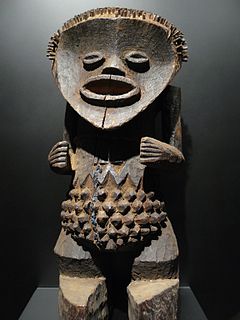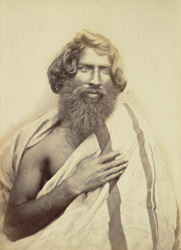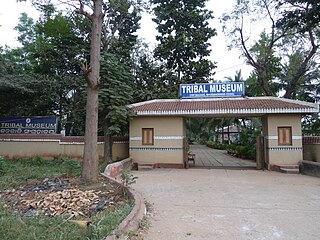 W
WTribal art is the visual arts and material culture of indigenous peoples. Also known as non-Western art or ethnographic art, or, controversially, primitive art, tribal arts have historically been collected by Western anthropologists, private collectors, and museums, particularly ethnographic and natural history museums. The term "primitive" is criticized as being Eurocentric and pejorative.
 W
WThe Antique Tribal Art Dealers Association (ATADA), was founded in 1988, by a group of independent antique tribal art dealers to form a professional association of dealers that would provide education for the public and set standards for the trade. They recognized that tribal and ethnographic art had reached a level of specialization found in other art fields and were concerned by the volume of misidentified and pastiche materials on the market. Members offer buyers a guarantee that objects they sell are as represented regarding age, authenticity and extent of restoration.
 W
WBijago art or Bidyogo art is African tribal art produced by the natives of the Bijagos Islands of Guinea-Bissau. It includes many artifacts for daily use and ritual practices, following a traditional iconography that is unique to their culture, but shows variations from island to island. Such art pieces are known as Bidyogo art and their unique aesthetics make Bidyogo art distinctive from all other African tribal art with the exception of the nearby Baga people who share some of the iconography ."
 W
WThe Highland People Discovery Museum (พิพิธภัณฑ์เรียนรู้ราษฎรบนพื้นที่สูง), formerly known as Tribal Museum is an ethnographic museum in the Mueang Chiang Mai District of Chiang Mai province, northern Thailand, showing the life of Thailand's minority hill tribes.
 W
WThe John Young Museum of Art is located on the campus of the University of Hawaii at Manoa in Krauss Hall at 2500 Dole Street Honolulu, HI 96822.
 W
WThe Kwele people are a tribal group of eastern Gabon, Republic of the Congo, and Cameroons in Central Africa. They fled the coastal area of West Africa during the 19th century, after their traditional enemies acquired firearms from the slave traders. This altercation is often called the "Poupou" war. The Kwele then settled into lands between the Dja and Ivindo rivers. The Kwele are noted for their ceremonial masks which are collected as art objects.
 W
WGambhir Singh Mura was an Indian tribal dancer known for his contributions to the tribal martial dance of Chhau. He was an exponent of the Purulia school of Chhau.
 W
WThe Museum of African Culture Is a museum in Newfield, Maine, Maine, United States, that specialized in Sub-Saharan African tribal art and culture. Changing exhibits included art inspired by the African diaspora, and the museum's programs included music, storytelling, films, poetry, literature, healing ceremonies and other Sub-Saharan African cultural traditions. Collections included wooden masks, figures, textiles, household objects and tools. It is the only museum in northern New England devoted to African arts and culture and has over 4,500 pieces of art
 W
WThe Museum of Primitive Art, is a now defunct museum devoted to the early arts of the indigenous cultures of Africa, the Americas, Asia, Europe and Oceania. It was founded in 1954 by Nelson Rockefeller, who donated his own collection of Tribal art. The museum opened to the public in 1957 in a townhouse on at 15 West 54th Street in New York City. Robert Goldwater (1907–1973) was the museum’s first director. The museum closed in 1976, and its collections were transferred to the Metropolitan Museum of Art.
 W
WThe Toda Embroidery, also locally known as "pukhoor", is an art work among the Toda pastoral people of Nilgiris, in Tamil Nadu, made exclusively by their women. The embroidery, which has a fine finish, appears like a woven cloth but is made with use of red and black threads with a white cotton cloth background. Both sides of the embroidered fabric are usable and the Toda people are proud of this heritage. Both men and women adorn themselves with the embroidered cloaks and shawls.
 W
WTribal Research Institute Museum, Museum of Tribal Arts and Artifacts, is a museum in Bhubaneswar, Odisha inside the campus of Scheduled Castes & Scheduled Tribes Research & Training Institute. It is popularly known as Tribal Museum and conceptually labeled as Museum of Man. It has life-sized authentic tribal dwellings, created by the tribal craftsmen offers a view of the State's tribal heritage. It has sections which showcase tribal artifacts and objects, focusing on well researched, documented cultural life of tribals of Odisha. It is headed by a Director, who is in the rank of a University Professor, and the administrative control lies in the hands of ST, SC, Minorities, and Backward Classes Welfare Department, Government of Odisha.